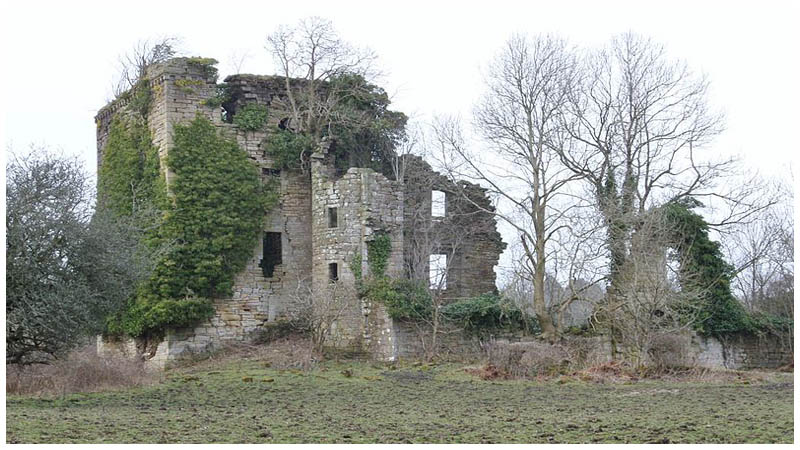“… and here and there the ivy like a warm garment to comfort it in its age wrapped its green leaves closely round the time-worn walls,” wrote Charles Dickens in his novel Barnaby Rudge when describing the Maypole Inn.
These same words can be used to describe the walls of Kilbirnie House, which today stands gloomy, ruinous and empty.

The house is located in the old barony of Kilbirnie in Ayrshire, Scotland. It is said to have been built in the 16th century, although the land upon which it was built has a history that spans hundreds of years.
It was in this area that Alexander III of Scotland gathered his forces in 1263 in preparation for The Battle of Largs.

According to historians, the house is comprised of two elements. One of these is the four-story-high tower that was erected towards the end of the 15th century for Malcolm Crawfurd.
The tower was the only feature on the site until another dwelling was added 150 years later. This new feature had no defensive purpose and served only as an addition to the old tower. Two contrasting maps depict the tower both with and without the new mansion; one was made in 1604 and the other in 1685.

The name Kilbirnie means “ the Church of St Brendan,” once translated from Gaelic. The keep was 42 feet by 33 feet. It had a cellar, as well as sleeping quarters and a hall that was richly lit by four windows, three of which were on the south side. Underneath the hall was a private room.

The tower also had a small cell that took on the role of a “starving pit.” It was dug in the north-west side of the tower and was only accessible through a hatch.
A small accident happened in 1602 when a burglar by the name of John Crawfurd entered the keep whilst no one was there. Crawfurd was found to be innocent even though the stolen goods were found in his possession.
The mansion was erected in 1627 using sandstone and, once finished, was quite a masterpiece. As well as by the magnificent front door, one could enter through the old tower via a door in the hall. Underneath were two cellars.

According to researchers, when the house was erected the hall at the keep became a dining room. There was a fireplace in the tower that was considered to be rather intriguing.
Within it was a carving, created on a piece of sandstone. It was done using the Gothic script and one part of it read “Maria.” The rest is yet to be deciphered and has remained a mystery for many decades. Some believe that it was a spell to prevent evil ghosts from entering the house.

When the tower hall became a dining room, the larger room in the house became a drawing room. The house and the tower survived until 1757. That year, on May 1st, a blazing fire caught both structures and turned them into ruins.

The mansion was abandoned and no renovation work was ever undertaken. The fire began when one of the servants noticed smoke coming from the house roof and warned the others.
Despite all efforts, the fire proved to be very powerful and swallowed both buildings. To this very day, the whole estate lies in ruins; it has been closed to the public and forgotten.
